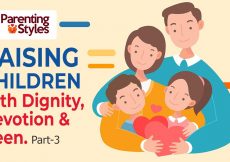Separation anxiety disorder (SAD) is a mental health disorder in which a child experiences extreme distress and fear of being separated from attachment figures such as parents or caregivers. Real or anticipated separation from the attachment figure can trigger the symptoms in children.
Approximately 1-4% of the general pediatric population is estimated to develop childhood separation anxiety disorder. Nearly all children before the age of three years experience short-term separation anxiety and show clingy behavior, and some older children may experience it at times of stress. However, a child with separation anxiety disorder can also have severe symptoms that last a long time.
Read this post to know more about the causes, symptoms, complications, diagnosis, and treatment for separation anxiety disorder in children.
Symptoms Of Separation Anxiety In Children
The symptoms of separation anxiety may commonly be seen in children after a break from school, such as after a long-term sickness or extended holiday. Although the symptoms may vary in each child, the following are some common ones.
- Nightmares about separation
- Refusal to sleep alone or stay alone
- Constant worry about the safety of family members
- Constant worry about getting lost from family or losing someone close
- Reluctance and refusal to go to school
- Excessive concern about one’s safety
- Excessive clinginess at home
- Constant worry when sleeping away from home
- Tantrums and panic at the time of separation from parents, caregivers, or family members
- Frequent complains about physical issues, such as headaches and stomach aches
- Difficulty saying goodbye to parents
These symptoms can also be seen in other health issues. Thus, consult a pediatrician for an exact diagnosis and treatment.
Causes And Risk Factors For Separation Anxiety In Children
Separation anxiety disorder is often linked to the following risk factors.
- Biological factors: Imbalance in the brain chemicals called neurotransmitters can control how someone feels. Neurotransmitters such as serotonin and dopamine are known to trigger anxiety feelings.
- Family factors: Anxiety issues can be inherited or learned from anyone anxious around the child. Sometimes, parental responses such as allowing a child to miss school if they are eager to go to school can cause more issues on the following day.
- Environmental factors: Sometimes, traumatic or stressful events such as an illness, death of a family member, or parents’ divorce can trigger separation anxiety disorder in children.
According to the Child Mind Institute, children who experience trauma, stress, changes in the environment such as moving to a new school or home, and unpleasant events in the family are more vulnerable to separation anxiety disorder than others. In addition, genetic factors may also increase the risk for SAD in some cases.
Complications Of Separation Anxiety Disorder In Children
Separation anxiety disorder may increase the risk for anxiety and mood disorders such as panic disorder, obsessive-compulsive disorder (OCD), and agoraphobia (fear of places and situations) in later life. It may also increase the likelihood of substance use disorders and depression.
Children may also face problems maintaining interpersonal relationships and face issues at school or other surroundings due to the symptoms. Further, poor academic performance, school refusals, apathy, and social withdrawal can also occur in some cases.
Prevention Of Separation Anxiety In Children
There are no sure-shot ways to prevent separation anxiety disorder in children. However, seeking early psychiatric advice may help reduce the symptoms or prevent the symptoms from worsening.
Diagnosis Of Separation Anxiety Disorder
Pediatric psychologists may diagnose separation anxiety disorder by evaluating the child’s symptoms. The child must have had persistent symptoms impairing normal functioning for more than four weeks to meet the diagnostic criteria.
Doctors may also see if the level of distress in the child while separated from the parents or caregivers is excessive for their age.
Treatment For Separation Anxiety In Children
The following treatments are recommended for children with SAD.
- Cognitive-behavioral therapy (CBT): It helps teach a child to cope with anxiety. In the initial phase, it can train the child to face the fear of separation and then manage it.
- Family therapy and parental training sessions: These are also provided to teach strategies and skills to the parents and caregivers to manage a child’s anxiety.
- Medications: Medicines such as serotonin reuptake inhibitors (SSRIs) are often prescribed to change the level of neurotransmitters in the brain.
In addition to these treatments, psychotherapists also teach a child to develop good sleep habits and ways to manage their academics with the condition.
How To Help A Child Cope With Separation Anxiety?
The following tips may help your child cope with separation anxiety disorder.
- Keep the therapy sessions and follow-ups up to date.
- Reassure and support your child.
- Encourage age-appropriate independence in children.
- Identify the stressful situations that trigger your child’s anxiety and plan to help them cope with them.
- Inform teachers and peers about the condition and remind them that your child needs additional reassurance at times.
- Seek support from local and other organizations.
Separation anxiety disorder can worsen if not managed on time. You may encourage independence in your child from a very young age. Seek medical care if your child has excessive clingy behavior that impacts their life, and you may also seek advice from a professional to learn strategies to cope and manage your child’s condition.
References:
MomJunction’s articles are written after analyzing the research works of expert authors and institutions. Our references consist of resources established by authorities in their respective fields. You can learn more about the authenticity of the information we present in our editorial policy.



































